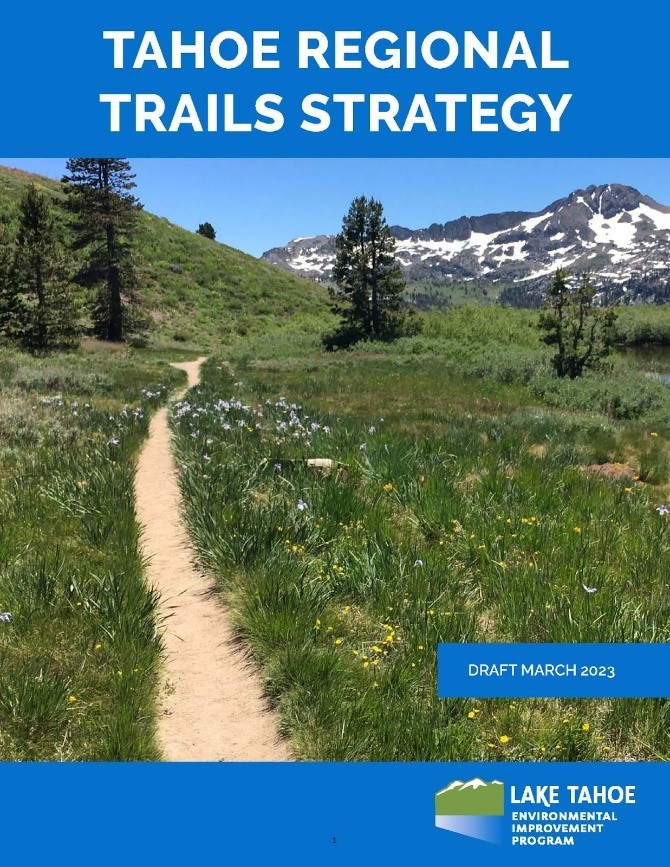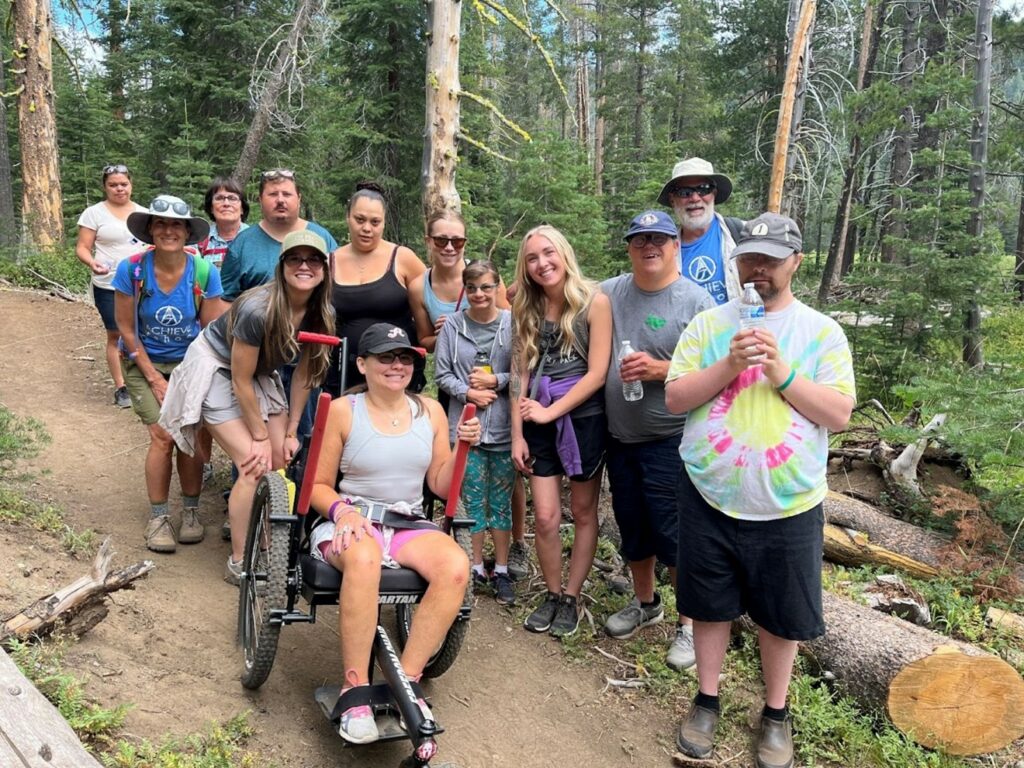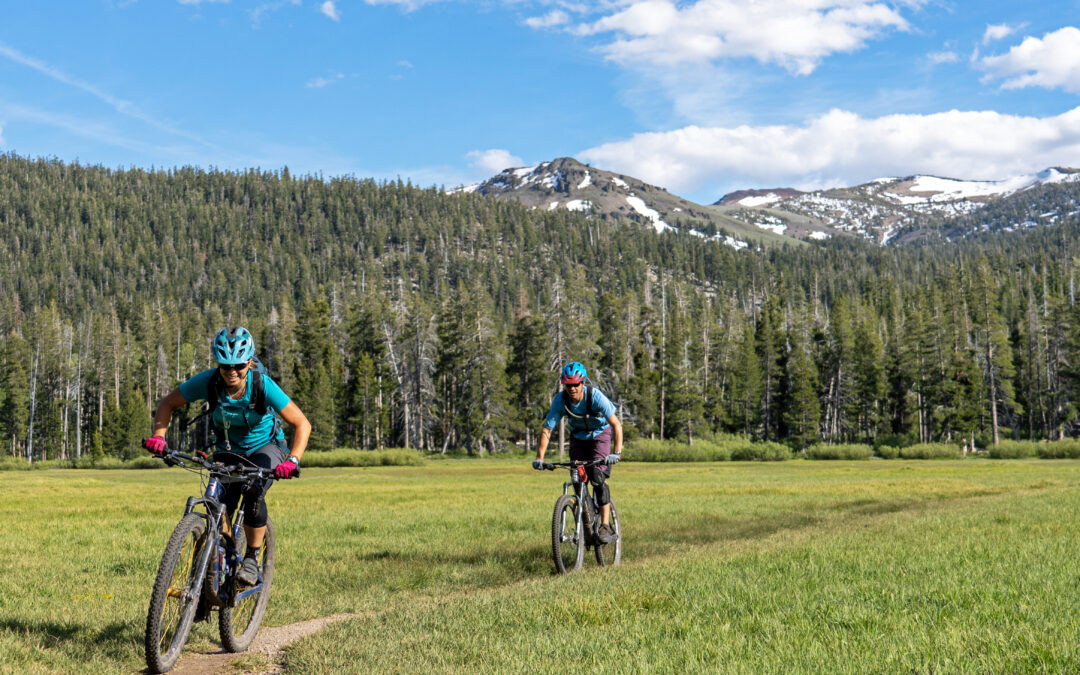Lake Tahoe, CA/NV – Buried beneath an ever-deepening blanket of snow in the Lake Tahoe Basin lie more than 580 miles of official dirt trails that provide recreation, transportation, fitness, and fun. For the first time ever, a coalition of Tahoe partners have developed a Tahoe Regional Trails Strategy to take a basin-wide perspective to trail planning and building. The strategy released today serves as a blueprint for a connected and accessible dirt trail network for Tahoe.
“Nearly 90 percent of the land in the Tahoe Basin is owned and managed by public agencies like the USDA Forest Service, state park agencies, and land conservancies,” said Kira Smith, Senior Planner with the Tahoe Regional Planning Agency (TRPA). “The Regional Trails Strategy helps align priorities among myriad partners, reduces complexity, and incorporates extensive public feedback to help guide the future of Tahoe’s trails.”

Caption: The Tahoe Trails Strategy creates a vision for a connected and accessible trail network that spans land managed by numerous agencies and links Tahoe’s backcountry, front country, and urban trail systems.
TRPA has been leading the strategy in conjunction with the Washoe Tribe of Nevada and California, the USDA Forest Service Lake Tahoe Basin Management Unit, Tahoe Area Mountain Biking Association, Tahoe Fund, Tahoe Rim Trail Association, California State Parks, Nevada State Parks, California Tahoe Conservancy, and Achieve Tahoe. The agency also incorporated input from 30 partners and received nearly 1,000 responses to a survey in English and Spanish about the needs of trail users.
“For years the Tahoe Fund has received independent funding requests for different trail building and maintenance projects throughout the Basin,” explained Amy Berry, Tahoe Fund CEO. “With this new trails strategy in place, we now have a regional perspective that allows us to prioritize our projects, helping to build a more sustainable and accessible trail network in Tahoe.”
The Tahoe Regional Trails Strategy outlines a vision, preliminary priorities over the next 15 years, and strategies for implementation, but leaves details of implementation of any singular project to land managers and trail stewards. As such, the trail alignments shown in the strategy are conceptual.
The team crafted the strategy with the goals of having trails be environmentally sustainable, equitable, connected, enjoyable, and feasible. The strategy is a living document and acknowledges that priority projects could change over time.
“The increased demand for a variety of uses on these trails, including hiking, mountain biking, dirt biking, and horseback riding, means that it’s a critical time for everyone to be working together to ensure that all users can enjoy their public lands,” said Drew Bray, Executive Director of the Tahoe Area Mountain Biking Association.
Until now, there has not been a collaborative priority list of dirt trail projects for the region. With the completion of this strategy, the five-year priority list of projects can be adopted into the Lake Tahoe Environmental Improvement Program (EIP), the region’s collaborative restoration program that has led to more than $2.7 billion in water quality, forest health, transportation, and stewardship projects.
“Folding this strategy into the EIP, which has a proven track record of success, will allow the partners to set annual priorities and leverage funding for these trails,” said Mike Gabor, Forest Engineering Staff Officer. “This plan assists the Forest Service in long range planning with other agencies and partners by capturing new trail interest and resource needs informing decisions for future opportunities.”

A group of people enjoying a Tahoe trail. Credit: Achieve Tahoe
The partners are encouraging the public to provide feedback on the draft strategy through March 31. There will also be a virtual public webinar on March 21 from 5:30 – 6:30 p.m. PST on Zoom. The webinar will include an overview of the planning process and a look at the biggest trail priorities for the next five years. Public feedback and questions will be available through the chat function during the webinar as well.
To register for the webinar, view the draft strategy, or share feedback about the Tahoe Regional Trails Strategy, visit the project website at tahoetrailsplan.org.
###
The Tahoe Regional Planning Agency leads the cooperative effort to preserve, restore, and enhance the unique natural and human environment of the Lake Tahoe Region, while improving local communities, and people’s interactions with our irreplaceable environment. For additional information, contact Jeff Cowen, Public Information Officer, at (775) 589-5278 or jcowen@trpa.gov.

